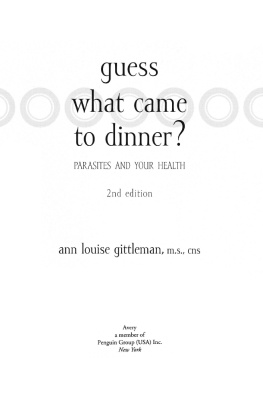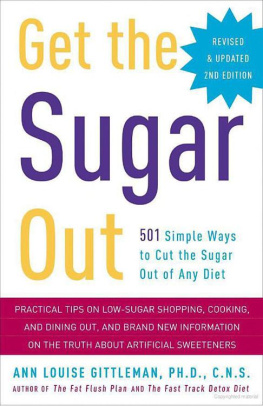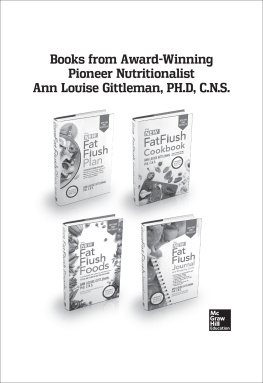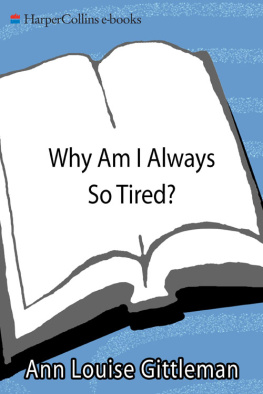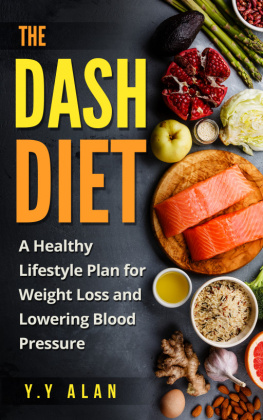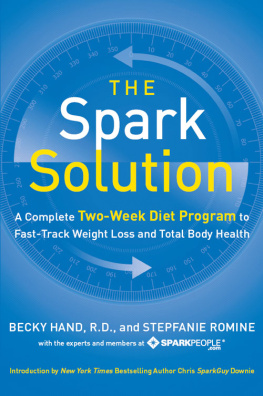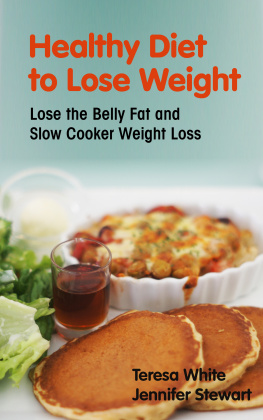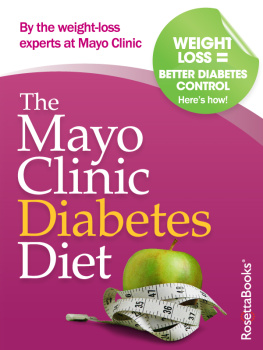BEYOND PRITIKIN
A Bantam Book
PUBLISHING HISTORY
Bantam hardcover edition / April 1988
Bantam paperback edition / March 1989
Bantam revised edition / February 1996
Grateful acknowledgment is made for permission to reprint the following: Charts from the Nutrition Action Health letter, copyright 1985, Center for Science in the Public Interest. Excerpts from Guess Whats Coming To Dinner, copyright 1987, Center for Science in the Public Interest. Excerpt from Food Is Your Best Medicine by Henry G. Bieler, M.D. Reprinted by permission of Random House, Inc.
All rights reserved.
Copyright 1988, 1996 by Ann Louise Gittleman.
Cover design copyright 1989 by One Plus One Studios.
Library of Congress Catalog Card Number 87-47803.
No part of this book may be reproduced or transmitted in any form or by any means, electronic or mechanical, including photocopying, recording, or by any information storage and retrieval system, without permission in writing from the publisher.
For information address: Bantam Books.
eISBN: 978-0-307-57195-3
Bantam Books are published by Bantam Books, a division of Bantam Doubleday Dell Publishing Group, Inc. Its trademark, consisting of the words Bantam Books and the portrayal of a rooster, is Registered in U.S. Patent and Trademark Office and in other countries. Marca Registrada. Bantam Books, 1540 Broadway, New York, New York 10036.
v3.1
NOTE
Pritikin is a registered trademark and service mark of Pritikin Programs, Inc. This book is neither sponsored by, endorsed by, nor associated with Pritikin Programs, Inc., or any of the Pritikin Longevity Centers.
This book is dedicated to
the memory of Harry Oliphant.
CONTENTS
The Yeast Problem:
The Twentieth Century Epidemic
FOREWORD
In 1976, as a very young physician, I worked on the staff of the Pritikin Longevity Center, which was under the direction of its founder, Nathan Pritikin. This experience changed the course of my medical career. While I was there, I saw patients with severe degenerative diseases get well because of a simple but dramatic change in their diet that drastically reduced fat intake. The message from Pritikin and his famous Longevity Center was that fats are the primary cause of most of our serious and deadliest diseases, starting with heart disease and encompassing cancer, diabetes, high blood pressure, and obesity.
This message, however, is not totally accurate. The latest research has shown that fats, per se, are not the problem; it is the inappropriate types and excessive amounts of fat we consume that constitutes the problem. In fact, as is stated clearly throughout this book, certain fats are not only acceptable, but absolutely essential for optimal health.
Ann Louise Gittleman has done a masterful job maintaining the integrity of the original message of Nathan Pritikins Longevity Center to reduce total fat intake, especially animal fats, while resurrecting the importance of the Omega-3 and Omega-6 fatty acids. These essential fatty acids, which cannot be manufactured in the body, are the precursors of the prostaglandins, some of the most fascinating, elusive, and potentially beneficial hormones. Using the Omega-3 and Omega-6 fatty acids that are found in certain foods, as well as supplements, to stimulate beneficial prostaglandin production is a natural and essential second step to the overall concept of fat reduction. Just as you cannot malign water because in certain situations it has the capacity to drown and kill, we should not malign fats because inappropriate and excessive intake creates illness.
Ms. Gittleman has done us all a service by showing us how the essential fats can and should be used in an overall program for living longer, losing weight, and reaching optimal health.
J ULIAN W HITAKER , M.D.
Whitaker Wellness Institute
PREFACE TO THE 1996 EDITION:
PROOF POSITIVE OF THE NEED FOR BEYOND PRITIKIN
A newly revised Beyond Pritikin is here thanks to all of you. As one devoted reader wrote in a letter to me: Beyond Pritikin was so ahead of its time. Many of the trends you warned us about (how low-fat can make you fat, the carbohydrate overload consequences, how margarine is a health hazard, and the widespread effect of essential fat deficiency) are making headlines every day. Now that the public has caught up with your message, tell us more. And so, here is more.
The sad truth is that Americans are getting fatter. Fat phobia has overtaken the land, despite the lower-fat, lower-cholesterol diets. In fact, even though Americans have reduced their total fat intake from 37 percent to 34 percent during the last decade, our battle against the bulge is going in the wrong direction. In 1990, as part of its Healthy People 2000 Goals, the U.S. Department of Health set a goal of reducing the percentage of overweight Americans from 25 percent to 20 percent by the turn of the century. However, the most recent statistics show that if current trends continue, Americans not only will not reach that goal, but we will be farther from it than ever before. The latest National Health and Nutrition Exam Survey reported that, as a country, we have become 30 percent more overweight in the last decade. A University of Alabama at Birmingham report found that within a recent seven-year time frame young adults between the ages of 25 and 30 have gained an average of 10 pounds.
You know our war against being overweight has become big-time news when the cover page of the January 16, 1995, issue of Time magazine says in bold print: Girth of a Nation and tells us: Heres some news thats hard to swallow: Despite the health craze, Americans are fatter than ever. Although it addressed a very important national issue, the article did not cover key reasons behind Americas weight problems: the lack of essential fats in our diet, our increasing consumption of carbohydrates, and the connection between insulin and obesity. This book provides information about these frequently ignored but very important nutrition concepts.
Not only are many well-intentioned individuals gaining weight since the fat-free 1980s, they are now complaining of additional problems, such as fatigue, bloating, mood swings, and uncontrollable sugar cravings. These problems seem to be occurring in epidemic proportions since our nutritional leaders and our government have been encouraging us to eat low-fat, high-carbohydrate diets.
A new chapter in this book entitled Curbing Those Crazy Carbohydrates explains many of the reasons why Americans are getting heavier. In this chapter, I share some insights into the overlooked but far-reaching insulin effects of eating so many carbohydrates, even the complex ones. You will be introduced to the Glycemic Index, which lists carbohydrate-rich foods and measures the rate at which carbohydrates break down and release glucose into the body. You will learn that insulin is a fat-storage hormone par excellence, and the more pasta, bread, potatoes, and brown rice you eat, the more insulin your body will produce unless you balance those carbohydrates with some protein and fat. Too many carbohydrates eaten by themselves or without a sufficient balance of protein, fat, or exercise will stimulate the body to make and store fat and can cause other serious health problems.


